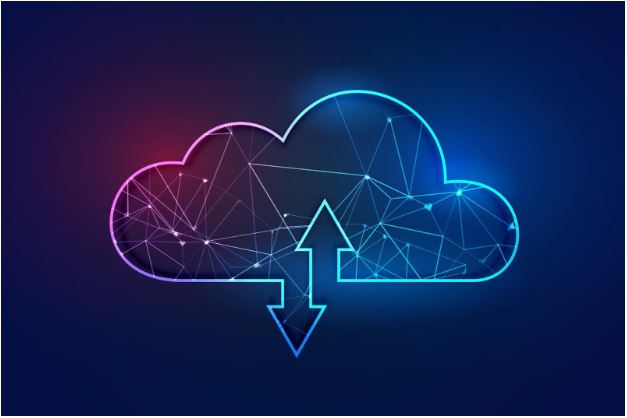Business-to-business (B2B) sales analytics transforms how companies comprehend and improve their sales strategy. It is done by utilizing data-driven insights. This article examines the value of B2B sales analytics and how it aids decision-making, process simplification, and revenue growth.
You also should know the B2B sales e-commerce enablement tools so that you can work more efficiently.
Understanding B2B Sales Analytics
B2B sales analytics are fundamentally concerned with gathering, analyzing, and interpreting sales data to learn about customer behavior, sales trends, and overall performance. It allows companies to turn raw data into valuable insight that directs them to successful outcomes. Here's why B2B sales analytics is a game-changer for modern businesses:
Unveiling Customer Behavior
Analyzing Historical Data: B2B sales analytics allows you to analyze past customer interactions, purchase patterns, and preferences, helping you understand what resonates with your target audience.
Personalization Opportunities: With customer insights, you can tailor your sales pitches and marketing efforts to individual preferences, boosting customer engagement and loyalty.
Optimizing Sales Strategies
Performance Evaluation: B2B sales analytics provides a comprehensive view of your sales team's performance, identifying top-performing individuals and areas for improvement.
Sales Funnel Analysis: Understand how prospects move through the sales funnel, pinpointing bottlenecks and optimizing conversion rates at each stage.
Embracing Data-Driven Decision Making
In today's competitive landscape, data is the kingpin that drives success. Businesses can make strategic decisions based on complex data rather than sentiments, thanks to B2B sales analytics. How can your B2B sales process make use of data-driven decision-making?
Identifying High-Value Customers
Customer Segmentation: Use B2B sales analytics to divide your clientele into groups according to their industry, purchasing patterns, and income potential, while incorporating targeted sales prospecting. It will help you concentrate on high-value clients.
Targeted Marketing: Create advertising campaigns that speak to specific client groups, offering tailored messaging that increases conversion rates.
Forecasting Sales Performance
Predictive Analytics: Leverage predictive models to forecast future sales performance, enabling you to allocate resources effectively and set achievable targets. Also, build your own sales kickoff agenda to tailor strategies that align with your team's strengths and market dynamics. Incorporating a sales performance management platform can streamline these processes, providing real-time insights and enhancing overall sales efficiency.
Mitigating Risks: Identify potential risks and challenges in your sales pipeline, allowing you to address them and minimize revenue loss proactively.
Implementing B2B Sales Analytics Tools
Adopting B2B sales analytics tools is critical to optimizing your sales process and achieving sustainable growth. Let's explore some essential tools and technologies to consider for your sales analytics journey:
Customer Relationship Management (CRM) Systems
Data Centralization: CRM systems act as a repository for all customer-related information, facilitating easy access and analysis of customer data.
Sales Performance Tracking: Track individual and team sales performance within the CRM, enabling better sales management and performance evaluation. There are many CRMs on the market, made suitable for your sales process, including Livespace.
Business Intelligence (BI) Platforms
Data Visualization: BI platforms convert complex sales data into visually appealing charts and graphs, simplifying data interpretation and decision-making.
Real-time Reporting: Access real-time sales reports, allowing you to respond promptly to market changes and make agile business decisions.
Sales Forecasting Tools
Accurate Projections: Sales forecasting tools use historical data and predictive algorithms to provide accurate sales projections, aiding in resource planning and budgeting.
What-If Analysis: Perform what-if scenarios to explore the potential impact of various sales strategies and market fluctuations.
Challenges and Solutions in B2B Sales Analytics Implementation
While B2B sales analytics offers tremendous benefits, its implementation comes with challenges. Addressing these hurdles is crucial for deriving maximum value from your analytics initiatives:
Data Quality and Integration
Data Cleansing: Ensure data accuracy and consistency by regularly cleansing and validating your sales data.
Integration Efforts: Integrate data from various sources, such as CRM, marketing automation tools, and ERP systems, to create a comprehensive view of your sales process.
Analytical Skills Gap
Training and Development: Invest in training programs to equip your sales team with the analytical skills to effectively interpret and utilize data.
External Expertise: Consider partnering with analytics experts or hiring data analysts to bridge skills gaps within your organization.
Conclusion
In the rapidly evolving B2B sales industry, harnessing the power of data through analytics is no longer a luxury; it is a must for long-term success and development. You may put your company ahead of the competition and create a wealth of new prospects by embracing B2B sales analytics, comprehending customer behavior, and making data-driven choices. If you immerse yourself in the field, you will see how B2B sales analytics may radically alter your company.
Frequently Asked Questions (FAQs)
Q: Why is B2B sales analytics vital for businesses? What is it?
Ans: To better understand customer behavior and overall efficacy, B2B sales analytics involves obtaining, analyzing, and drawing conclusions from sales data. It enables organizations to make well-informed decisions, improve operations, and spur revenue development.
Q: How can B2B sales analytics help businesses understand customer behavior?
Ans: B2B sales analytics allows businesses to analyze past customer interactions, purchase patterns, and preferences, providing valuable insights for understanding what resonates with the target audience. It enables personalization opportunities, boosting customer engagement and loyalty.
Q: What benefits does B2B sales analytics offer in optimizing sales strategies?
Ans: B2B sales analytics provides a comprehensive view of sales team performance and identifies areas for improvement. It also helps understand how prospects move through the sales funnel, allowing businesses to optimize conversion rates at each stage.
Q: How does data-driven decision-making contribute to B2B sales success?
Ans: Businesses may make strategic decisions in B2B sales based on factual facts rather than gut feeling when they use data-driven decision-making. This approach helps identify high-value customers through customer segmentation and enables accurate sales performance forecasting.
Q: What are some essential B2B sales analytics tools and technologies?
Ans: Essential B2B, sales analytics tools, include Customer Relationship Management (CRM) systems for data centralization and sales performance tracking, Business Intelligence (BI) platforms for data visualization and real-time reporting, and Sales Forecasting Tools for accurate projections and what-if analysis.
Q: What are the common challenges faced during B2B sales analytics implementation?
Ans: Challenges in B2B sales analytics implementation include data quality and integration issues, which can be addressed through data cleansing and integrating data from various sources. Another challenge is the analytical skills gap, which can be mitigated through training programs and partnering with analytics experts.


.jpg)




